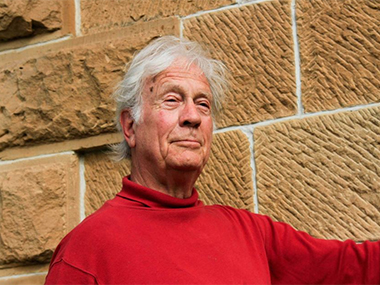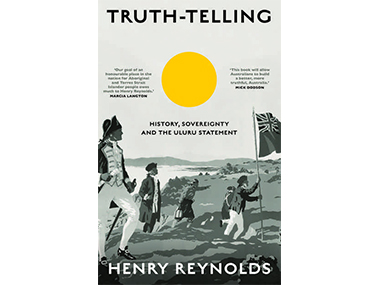TRUTH-TELLING

Historian and author Henry Reynolds, long time lecturer at James Cook University, now a professorial fellow in Tasmania
Jeremy Eccles | 26.03.21
Author: Jeremy Eccles
News source: Review
Henry Reynolds, offering a “big picture context” for the 'Uluru Statement from the Heart' in his latest book, is a fine historian. His intensive researches into the horrors of past colonial relationships with Australia's First Nations peoples have brought many unpleasant truths to the surface, brought accusations of his inventing a 'black armband' view of an otherwise unsullied past, allowing him now to nitpick his predecessor historians who either suppressed or ignored those truths.
But in 'Truth-Telling', he has to be as much the lawyer as the historian to dig his way through the confusing series of statements that accompanied the colonisation of 1888. For they were based on flawed reports of the situation here by Joseph Banks et al. Adding to the confusion, the politicians at Britain's Colonial Office were under pressure from the anti-slavery movement of the time there; while the governors here were subject to the reality of Aboriginal existence and resistance, and, after the Bigge Report, were pressured by the hunger of a squattocracy determined to 'pioneer' and profit as fast as possible and as brutally as necessary in the absence of any treaty or enforceable law to the contrary.
At times, therefore, the book reads like my law tomes at uni; though lacking the lawyer's comparative clarity, based on precedent and judgement.
As ever, Reynolds has thoroughly researched his sources. The 'estimable' Joseph Banks, for instance, claimed Australia “totally uninhabited” based on his view from the coast, and if not, the ”natives would speedily abandon the country to the (no doubt vastly superior) newcomers”. Governor Phillip, on the other hand, speedily reported that the land in his charge was “not what it was supposed to be” - noting the clear existence of huts, though not of cultivation. John Hunter even noted “settled tribes”, and fire-farming in 1788.
So Phillip's claim for half of the continent was not only absurd but actually illegal in terms of 19th Century international law. However it worked. For in 1889, Britain's Privy Council, the highest court of appeal from Australia, declared that in 1788 Australia had consisted of “a tract of territory practically unoccupied without settled inhabitants”.
But were those un-settled inhabitants British subjects – who should not, therefore be raped and/or murdered without redress – or were they enemy aliens at war with the colonisers?
When the privatised South Australia was established in 1835 it was acknowledged (in Britain) that Aborigines should be respected and their land purchased, while remoter tribes were “natives of separate states” and therefore beyond English law. So, did this give them sovereignty over their states?
Clearly, all the uncertainty at such a vast distance wasn't working for the Brits, who told New Zealand's colonisers to sign a treaty quick smart in 1840. Such a pity that they'd been quite unable to “gain the consent of the unorganised tribes” in Australia.
Only Earl Grey (of tea fame) saw a way to acknowledge Aboriginal existence as Britain handed over legal and moral authority to colonial parliaments of Australia in the 1850s. He made sure that freehold ownership was never permitted to the squatters and that their pastoral leases had to allow Aborigines to retain access for hunting, ceremony etc. Australia finally took notice of this 150 years later in the High Court's Wik judgement “to the surprise of the legal profession and to the horror of the pastoral industry”, as Reynolds puts it.
Tragically, in 1859 when Queensland probably had but 30,000 white 'pioneers' to 200,000 Indigenous people, Governor Bowen found it “almost sublime to watch the margins of Christianity and Civilisation advance at a rate of two hundred miles a year”. Of course, the glorious advance of Civilisation necessitated the deaths of some 40,000 Aborigines in the 40 years of that brutal expansion into the State's north. But it was assisted by both the uncaring Native Police units from the Murray River region who did much of the killing, and the employment of probably 10,000 local Aborigines on white properties. Not that they had much choice, one suspects.
So George Bowen's reputation in the Sunshine State may have to be clouded over. Reynolds is also prepared to bring down some even greater names who were the politicians, lawyers and landowners behind Australia's Federation – Messers Griffith, Downer and Forrest from Queensland, SA and WA respectively. He believes that they would have known that frontier killings were illegal but ignored the law, wearing their 'white blindfolds' – a phrase I believe I invented at the time of the National Museum's 'Frontier Conflict conference in 2003. Sir Samuel Griffith, indeed, stood in the Queensland parliament and attempted to justify those killings as an application of the victims' own tribal law! Should a university continue to be called after such a man?
As a more positive memorial of those times, Reynolds envisages a frontier war museum, housing an Unknown Warrior to match non-Indigenous Australia's Unknown Soldier. It could be modelled in Alabama's extraordinary museum of lynching. Perhaps he's unaware that one of the principles behind Adelaide's developing Aboriginal Art & Cultures Centre espoused by Liberal Premier Steven Marshall is truth-telling. And they're currently seeking a Kaurna name for the museum – not Downer!
With the book's cover claiming to be dealing with 'History, Sovereignty and the Uluru Statement', (whose text is included) one might have expected some thoughts on the Voice to Parliament. Perhaps that's beyond the bounds of history. We do however get much on the problems that both the truth-telling Makarrata and the writing of treaties will face as they're considered in the future. Only the Uluru Statement's claim of “unceded sovereignty” appears comparatively soluble. For 32% of Australia has already been returned to Traditional Owners, indeed 93% of The Kimberley is in that happy condition. And that land includes more than a thousand independent outstations – where, of course, much of the greatest First Nations art is created.
URL: https://www.newsouthbooks.com.au/books/truth-telling/
Share this:
»  del.icio.us
»
del.icio.us
»  Digg it
»
Digg it
»  reddit
»
reddit
»  Google
»
Google
»  StumbleUpon
»
StumbleUpon
»  Technorati
»
Technorati
»  Facebook
Facebook
Contact Details

'Truth-Telling', the book from New South Publishing

The much-castigated Sir Samuel Griffith, GCMG, first Chief Justice of Australia
Further Research
News Archive
- 29.03.21 | THE NATIONAL 2021
- 26.03.21 | TRUTH-TELLING
- 24.03.21 | All Revealed in Freo
- 22.03.21 | Bla Mela Kantri
- 19.03.21 | Two Big Moves
- 16.03.21 | The Very Late Charlie Flannigan
- 08.03.21 | PAPUNYA ART AT 50
- 05.03.21 | ANTEDILUVIAN ROO
- 19.02.21 | National Endowment for Indigenous Visual Arts
- 19.02.21 | lutruwita apology
- 17.02.21 | SONGSPIRALS TWIST AROUND SONGLINES
- 04.02.21 | FIRESTARTER
- 02.02.21 | A Design for Adelaide’s Aboriginal Cultures Centre
- 02.02.21 | A Design for Adelaide’s Aboriginal Cultures Centre
- 02.02.21 | The Boy from the Mish
Advertising

